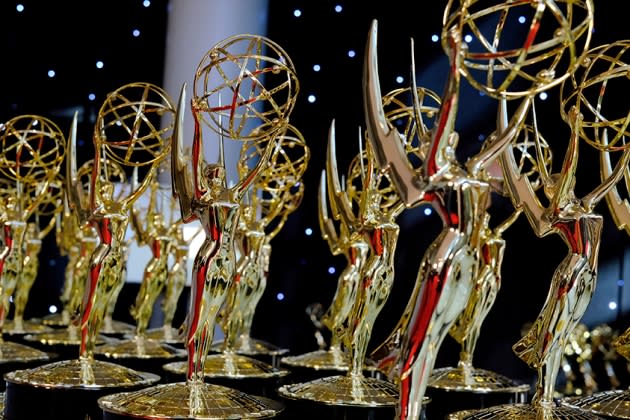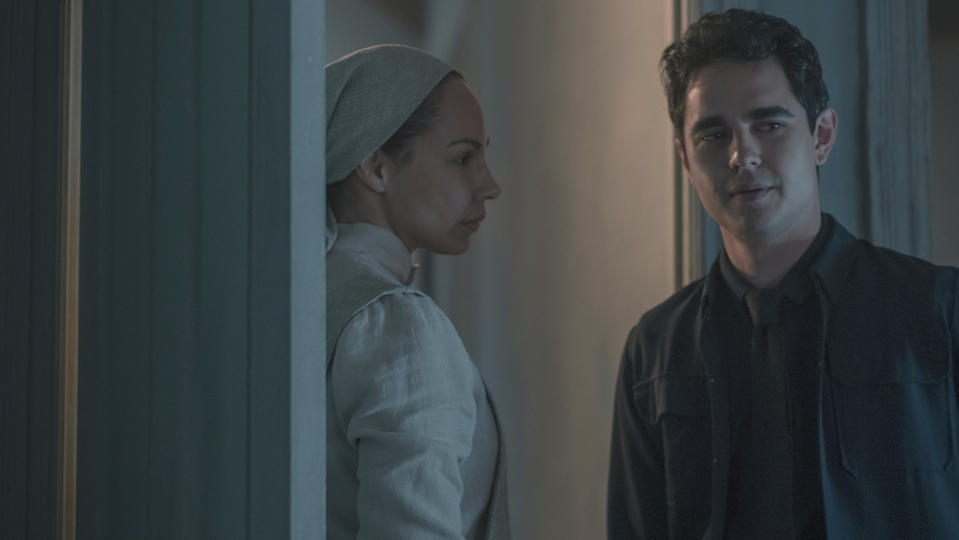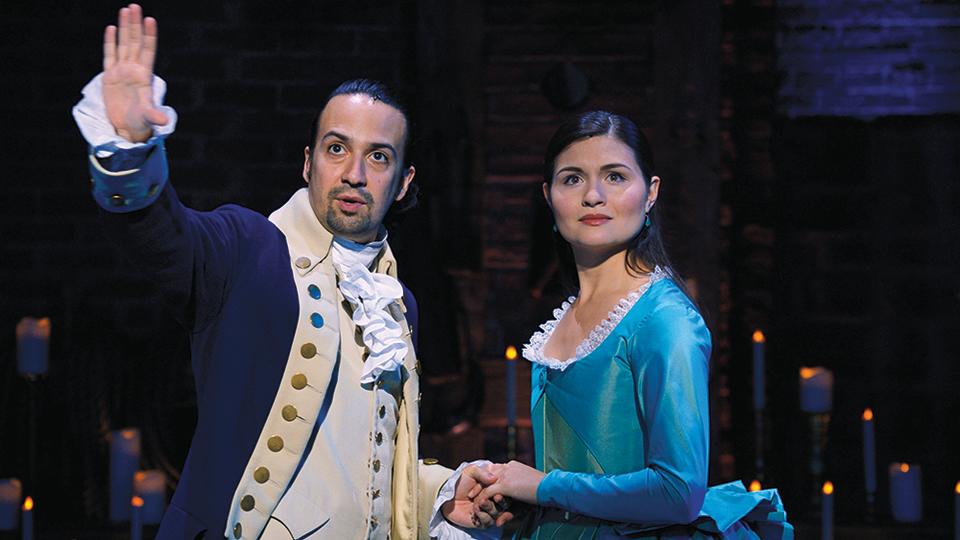Why #EmmysSoWhite and Persistent Sweeps Reveal Larger Problems With Emmy Voting Procedures

At Sunday’s Emmy Awards ceremony, the mood may have been #EmmysSoWhite, but the dearth of non-white winners this year is not the only critical issue the Television Academy needs to address.
All award shows are at a crossroads. Viewership is declining, the wants and needs of consumers are not being heard nor understood by the industry, and the push for diversity is still met with hostility and an ignorant interpretation in some quarters in Hollywood. Awards shows, for better or worse, are the forum where we see these tensions sometimes play out in public — like the look on Kerry Washington’s face when she realized that Michael K. Williams, the beloved character actor who died Sept. 6 at age 54, did not prevail in his supporting drama actor category. It wasn’t solely that POC hadn’t won any acting categories that infuriated spectators. It became clear to the viewers that voters just went “down the line” on their ballots for the same shows in every category. And with the TV Academy having a simple honor system for voters to attest that all the shows were watched in a given category, the establishment seemed to have chosen the shows they were familiar with and names they knew.
More from Variety
Netflix Execs Tout 'Historic Night for Streaming' After Dominating Emmy Awards
As Emmy Voters Lean Into Frontrunner Sweeps, They Lose Sight of TV's Range
'WandaVision' Completely Shut Out at Primetime Emmys -- and the Six Biggest Surprise Winners
The frustration at the lack of winning actors from BIPOC backgrounds was evident on TV Twitter, especially among creatives. But the issues for the TV Academy seem to be as much wrapped up in the nitty-gritty details of who among its 20,000-plus members gets to vote for what makes it into the Emmy competition. And on top of that, there is the “Too Much TV” factor that may be overwhelming some voters with too many shows to consider. Who has the time to watch and evaluate the entirety of 133 dramas, 68 comedies, 41 limited series and 41 television movies? Those were the actual number of submissions that were made for the Emmy nomination voting round this year. With that many contenders, that helps explain the kind of sweeps we’ve seen lately, with “Crown” and “The Queen’s Gambit” dominating this year and “Schitt’s Creek” last year.
Gloria Calderón Kellett, showrunner of “One Day at a Time” and the upcoming “With Love” on Amazon Prime, tweeted during the show “to the ‘allies’ who told me that they are losing jobs to diversity & there is too much diversity in TV PLEASE look at the winners of tonight’s Emmy. Who got extensive budgets & campaigns? Still, so much work to do for actual equality. Glad to be on the Exec committee to make change.”
To the "allies" who told me that they are losing jobs to diversity & there is too much diversity in TV PLEASE look at the winners of tonights Emmy. Who got extensive budgets & campaigns? Still so much work to do for actual equality. Glad to be on the Exec committee to make change
— Gloria Calderón Kellett (@everythingloria) September 20, 2021
That’s what many of us labeled as “wokesters” are met with when we are trying to raise conversations about the need for systemic change to diversify the storytelling landscape. However, Sunday’s winners demonstrate how much work still needs to be done.
The rules of competition and voting processes for Emmys have been in flux since Netflix, Amazon, Hulu and other top streamers — this year, add Apple TV and HBO Max — have heightened the competition that HBO used to own. It’s hard to put guardrails around categories and submission policies when TV itself is changing so much for the better. But there’s also, without a doubt, more jockeying and gamesmanship in the quest for the gold.
In 2013, the year Netflix came on the Emmy scene with “House of Cards,” the Primetime Emmys were dominated by the fourth season of “Modern Family” (ABC) and the first half of the fifth season of “Breaking Bad” (AMC), with HBO’s “Behind the Candelabra” taking home limited or movie during a time when those two categories were combined.

George Kraychyk/Hulu
In 2017, the race among streamers to be the first to claim a top series prize was won by Hulu for the inaugural season of “The Handmaid’s Tale.” After that, the TV Academy was inundated with power players and executives telling them to make a level playing field for all types of series. That’s when we saw the awards strategists and pundits calling foul on entries like the “American Horror Story” franchise being continuously submitted in limited series.
In 2015, the late-night competitive race expanded with the split of the variety series category in two: variety talk and variety sketch. Why was that? To acknowledge the differences between sketch comedy and a topical daily chat show. But it also led to only two shows being nominated in the sketch category this year, “A Black Lady Sketch Show” and “Saturday Night Live.” It was hard not to root for the newcomer with all of “SNL’s” dozens of wins over the last decade.
Then we have categories such as variety special (live) and variety special (pre-recorded), one picked up by Colbert, and the other picked up by “Hamilton” (Disney Plus), that had six of its cast nominated in acting categories. Director Thomas Kail has spoken openly about recording various stage performances on Broadway as “a film.” Still, when there was no way they could submit for the Oscars last year, and after being nominated at the Golden Globes in film, they switched the playbook, angling for SAG in television before going for Emmys. Why couldn’t it compete in television movie in that case? These are multiple examples of the glaring inconsistencies over the years.
To understand what influences the outcome of the annual Emmy heat is to comprehend the voting practices of the Television Academy. It consists of 30 peer groups, each representing fields of expertise within the television industry — animation, art directors/set decorators, casting directors, children’s programming, choreography, cinematographers, commercials, costume design and supervision, daytime programming, directors, documentary programming, interactive media, lighting, camera and technical arts, Los Angeles area, makeup artists and hairstylists, motion and title design, music, performers, picture editors, producers, production executives, professional representatives, public relations, reality programming, science and technology, sound, sound editors, special visual effects, stunts, television executives and writers.
For the nomination round of voting, there is no limit to the number of nominees that voters can choose. For reference, there were 133 drama submissions, while comedy saw 68 titles vying for slots. As a member, if you so choose, you can check off every single series, or if you’re a savvy awards studio, ensure you get members to check off all of your shows. Can that explain why jaw-dropping inclusions like “Emily in Paris” made the cut? Perhaps. When filling out the ballot, the names of the series are shown, without the network or synopsis shown, in alphabetical order. There is an endless scroll with boxes to check, so does this become a simple name recognition game, or are voters truly identifying their favorites in the group? It feels like there’s got to be a better way to sort through the playing field at the first stage of the process. Perhaps adopting the BAFTA method of a longlist and/or shortlist round to narrow down the contenders to 25 would help streamline and encourage that members are taking the time to watch all the series and performances in contention.

Courtesy of Disney Plus
Another important consideration is simply — intention matters. It is time for the Television Academy and the Academy of Motion Pictures Arts and Sciences (AMPAS) to have a summit to sort out the rules for when movies and TV programs can be submitted for Emmys and Oscars. Even further, reasonably, it’s time for each of them to have an “intention letter” or pledge signed by the creator, so they don’t play second fiddle to one when the other rejects their efforts. As much as I adore the documentary features “76 Days,” “Boys State” and “Dick Johnson Is Dead,” watching them make the Oscar documentary shortlist of 15, before being snubbed on nomination morning, and now making a play and winning Creative Arts Emmys, is not something that sits right with many. The feeling is that it impedes filmmakers who are making their series with the intention of television. Additionally, a $12,500 submission pricetag for Oscar submission and then additional fees for the Emmys also disadvantages independent and lower-budget films and series.
So, where are the checks and balances on the part of the Academy?
It’s easy to associate the outcome of the Emmy acting winners last night with the membership demographic of the TV Academy, but what is that specific breakdown? Before the pandemic, the TV Academy membership had roughly 25,000 members. In an exclusive interview with Variety, TV Academy president Maury McIntyre revealed that the membership numbers had dipped by 5,000 over the past year. Who got booted out? How diverse are the members? 20,000 is a lot of people to manage, and how many of them are voting?
So, where do we stand now?
For the past few years, the TV Academy has made significant rule changes on a regular basis in what seems like a trial and error effort to root out “fixes” like software bugs. But is there one single solution? Probably not. I applaud the Television Academy’s past and present attempts to find one, but they aren’t there yet.
Best of Variety
Sign up for Variety’s Newsletter. For the latest news, follow us on Facebook, Twitter, and Instagram.

 Yahoo Finance
Yahoo Finance 